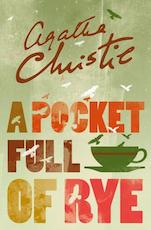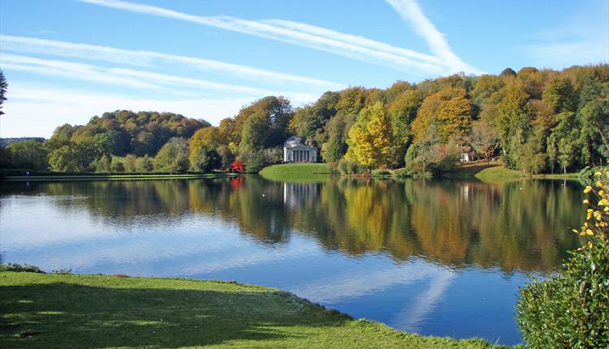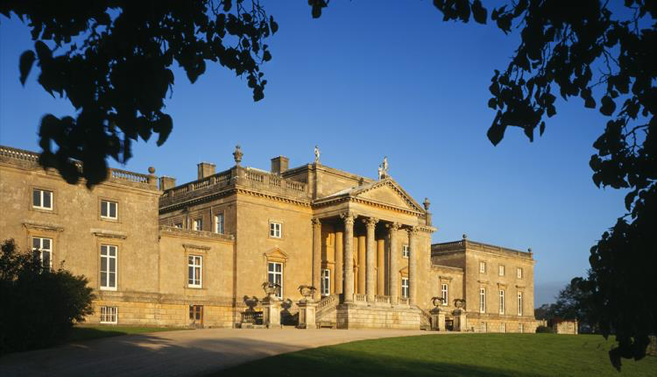
Poirot Score: 62
A Pocket Full of Rye
☆☆☆
Reasons for Poirot Score
Christie aficionados may crack the puzzle from a knowledge of her methods of misdirection but the positive clues are few and several solutions are plausible. The murders follow the nursery rhyme but this structure is forced and doesn’t quite come off. There are some entertaining characters, and wry and perceptive comments on the England of the 1950s. An entertaining read but not one of Christie’s best whodunnit puzzles.
Click here for full review (spoilers ahead)
Trivia
Dedication
For Bruce Ingram who liked and published my first short stories
Bruce Ingram (1877-1963) was a doyen of British journalism as editor of The Illustrated London News for a record 63 years (1900-1963). From 1905 he was also editor of The Sketch. Both news magazines had been founded by his grandfather. Ingram was impressed by Christie’s first novel, The Mysterious Affair at Styles, and commissioned twelve short stories to feature Hercule Poirot. The first of these stories, The Affair at the Victory Ball, was first published in The Sketch in March 1923, the same month as the second Poirot novel (The Murder on the Links) was published in the US and and two months before the novel was published in the UK. Victory Ball is therefore considered to be the second outing for the great detective. It is a neat story that centres on six people dressed in the costumes of the commedia dell’arte and its theatricality made for a good episode in the TV Poirot series starring David Suchet (in 1991). Christie’s style at this point in her development owes a great deal to Conan Doyle. The opening, in ‘Poirot’s rooms’, might easily be in Baker Street, and Hastings plays the perfect Watson to Poirot’s Holmes with exchanges such as: ‘Dear me!’ I exclaimed. ‘This becomes more and more involved.’ ‘On the contrary,’ replied Poirot placidly, ‘it becomes more and more simple.’
The National Trust
The lodge at the gates of Hartington Park, that vast unwieldy Palladian house with its twenty-nine bedrooms which had now been taken over by the National Trust
Chapter 4
The National Trust is the largest conservation charity in Europe. It owns around 200 houses, and almost 1000 square miles (2500 square kilometres, or 250,000 hectares) making it Britain’s biggest land-owner.
The function of the Trust is to ‘protect and care for places so that people and nature can thrive’. It looks after much of Britain’s ‘coastline, historic sites, countryside and green spaces, ensuring everyone benefits’. The Trust is five years younger than Agatha Christie. It was founded in 1895, and in 2020 celebrated its 125th birthday.
The Trust’s origins were failure. The seed from which it grew was the unsuccessful attempt to save the remains of the garden of John Evelyn, the diarist, at Sayes Court in Deptford just south of the river Thames in London, and west of Greenwich. This attempt brought three people, each with a different passion, together in one of those happy alignments that foster creativity.
Octavia Hill had been for many years concerned with enabling decent housing for poor people in London. One of her core beliefs, a belief that has modern resonance, was that all people should have ready access to green space. The problem was how to preserve the green spaces of London from being lost to development.
Canon Hardwicke Rawnsley was concerned about one of Britain’s most beautiful areas of countryside – the Lake District in the northwest of England. The rapid industrialisation of Victorian England was destroying much of “England’s green and pleasant land”. Canon Rawnsley was determined to somehow save the Lake District from such destruction.
Robert Hunter was a lawyer who worked, unpaid, for the Commons Preservation Society which aimed to prevent the common land – that is land available to anyone – from being built on or used for railways. The Society successfully lobbied Parliament to preserve both Hampstead Heath and Epping Forest as green spaces for public enjoyment.
The legal problem, as Hunter realised, was that it was not possible in general for a public entity to take over control to protect land from private development. A building might on occasions be protected, say, as a museum or library by a local authority, but many historically important buildings could not be so protected. The most effective solution, Hunter realised, was the creation of a charity that could own property – land and buildings – and that was obliged to preserve what it owned for the good of the public. And so these three Great Victorians founded the National Trust, but too late to save Sayes Court. The Trust was incorportated by Act of Parliament in 1907, an Act which first gave us the legal concept of an amenity – i.e. something (building, land, water etc.) that can be considered an entity and which can be protected from inappropriate development.
Christie’s reference to a large house ‘now taken over by the National Trust’ reflects the consequences of a later Act of Parliament – The National Trust Act, 1937. The problem that this Act addressed was that there was an increasing number of large estates (houses and accompanying land) that the owners were no longer sufficiently wealthy to maintain. The problem was exacerbated by death duties – the taxes paid on the death of the owner which were in proportion to the value (which could be very great) of the estate. As a result estates were being broken up and historic houses pulled down. The 1937 Act created the Country Houses Scheme. This allowed the large-scale transfer of these estates to the National Trust in lieu of death duties. Under the scheme the family – the heirs – are allowed to continue to live in the house but significant parts must be accessible to the public. Ownership may be shared between the Trust and the family.

Stourhead, in Wiltshire, in the south of England, was the first house to be saved under the scheme (and it passed to the Trust on the deaths of Sir Henry and Lady Hoare in 1947). Stourhead is a Palladian House and it seems likely that it was in Christie’s mind when she wrote the passage quoted above.
Palladian architecture, and Hartington Park
Palladian architecture was influenced by Classical Rome with an emphasis on porticos of columns, symmetry and proportion. Palladian takes its name from the sixteenth century Venetian architect, Andrea Palladio. Many of Palladio’s ideas were brought to England by the influential architect, Inigo Jones (1573-1652). ‘English Palladianism’ was revived in the eighteenth century. The house at Stourhead was designed by Colen Campbell and built between 1721-1725. The garden was laid out half a century later influenced by the paintings of Claude Lorrain and others, with a lake and several classical temples.Although there is a village called Hartington in Derbyshire, and indeed a Hartington Park in London, it seems unlikely that Christie was in any way referring to these. She probably chose the name as sounding like a grand English estate.

Edith Thompson case
He remembered the Edith Thompson case
Chapter 11
See ‘Trivia’ for Crooked House

